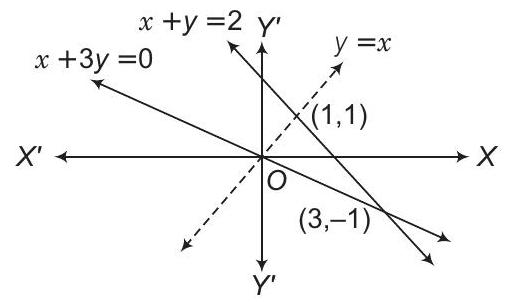Application of Derivatives 1 Question 10
10. The normal to the curve
(a) does not meet the curve again
(2015 Main)
(b) meets in the curve again the second quadrant
(c) meets the curve again in the third quadrant
(d) meets the curve again in the fourth quadrant
Show Answer
Answer:
Correct Answer: 10.
Solution:
- Given equation of curve is
On differentiating w.r.t
Equation of normal at
On solving Eqs. (i) and (ii) simultaneously, we get
Now, when
and when
Hence, normal meets the curve again at
Alternate Solution
Equation of normal at
It intersects







